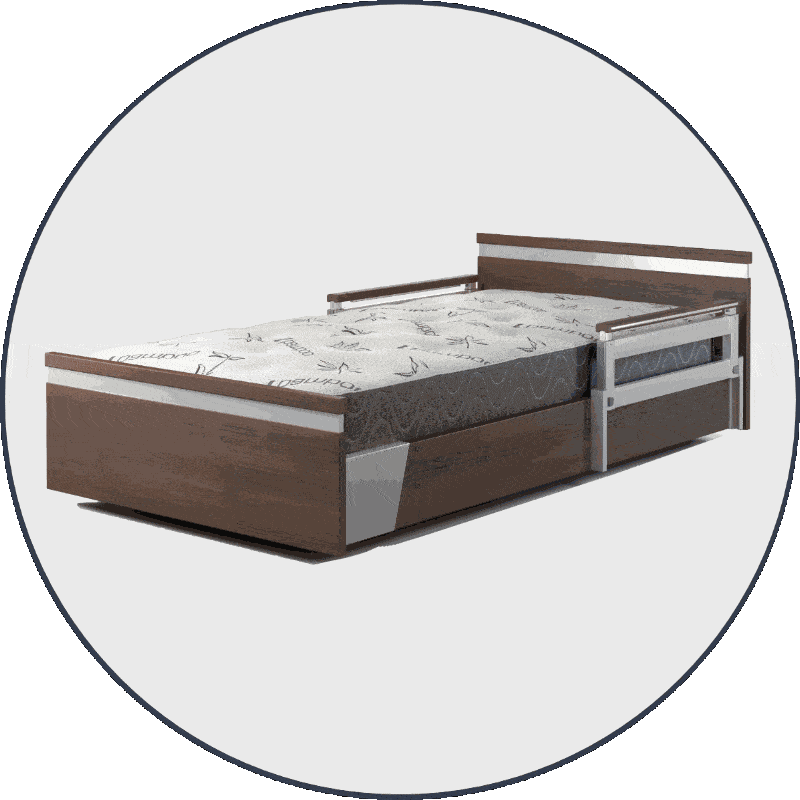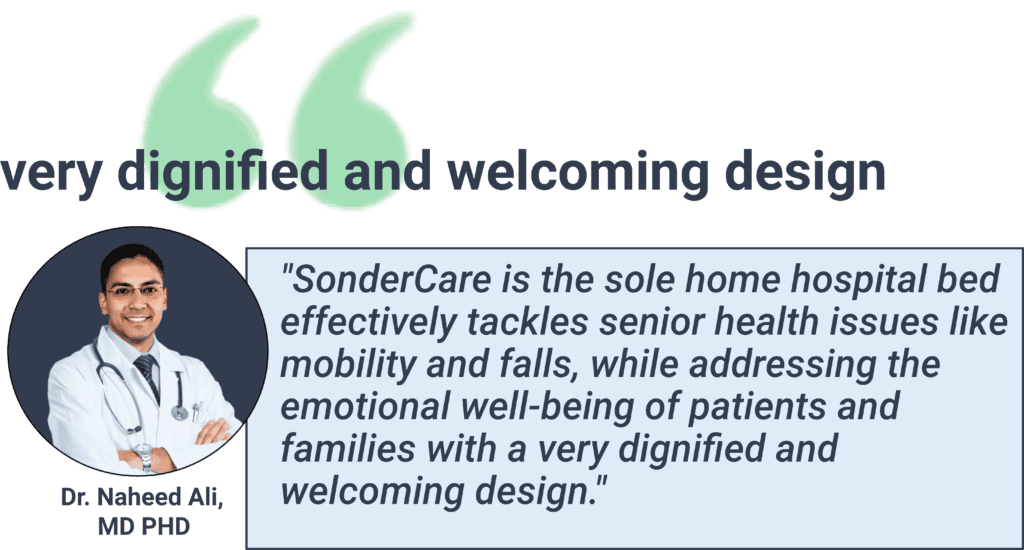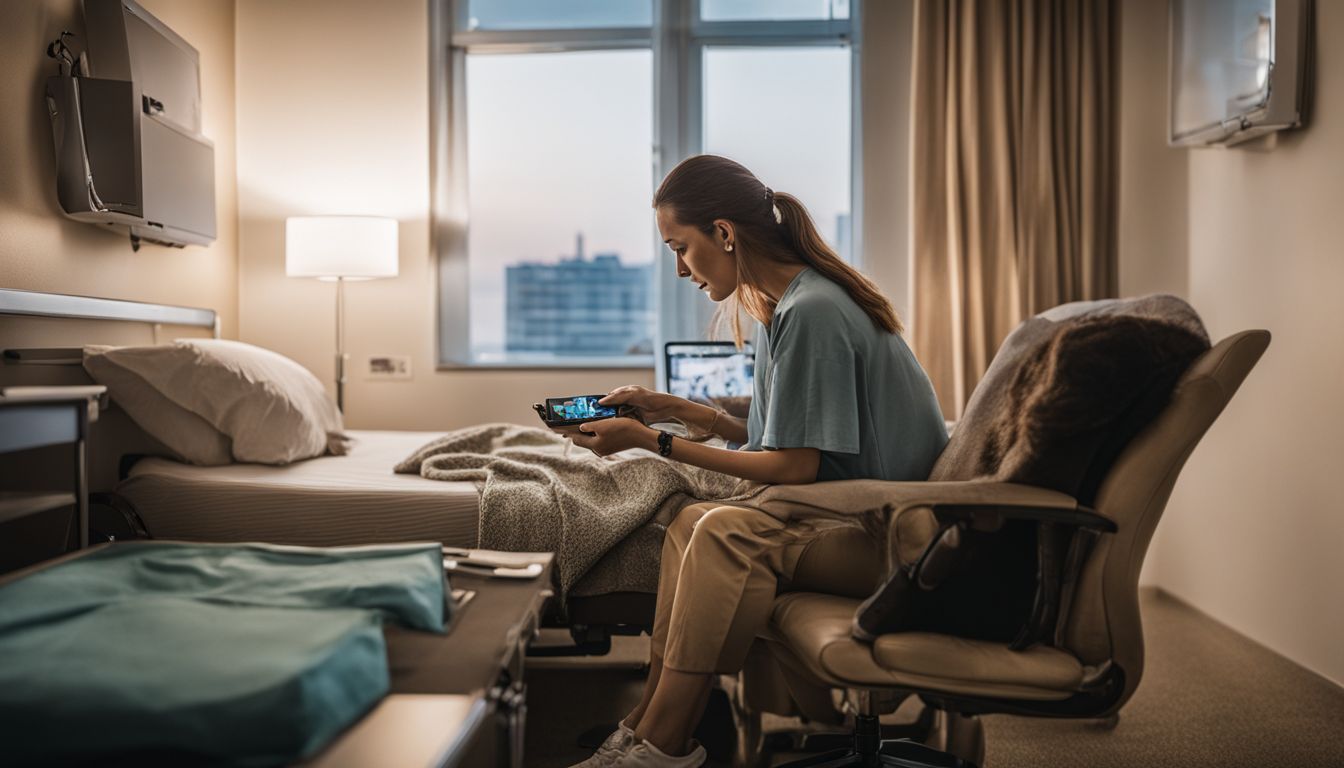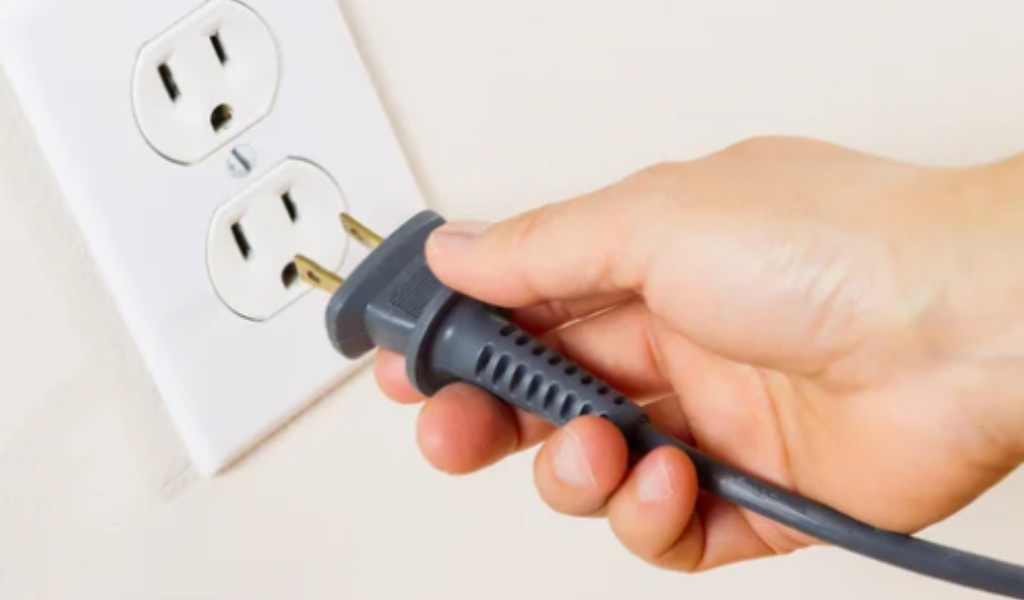Caring for an aging parent can be challenging, especially when mobility or health issues arise. One crucial area to address is their sleeping environment. The right bed can dramatically impact comfort, safety, and independence. While there are many “smart” technologies out there, here we focus primarily on the core of comfortable and safe sleep: the bed itself, particularly hospital beds designed for home use. We’ll explore how different types of beds, like those offered by SonderCare, can help your loved ones age comfortably and safely at home.
-
Hospital beds designed for home use, like those from SonderCare, prioritize comfort, safety, and ease of transfers for aging parents.
-
Full-electric adjustability is crucial for those with mobility limitations, chronic pain, or conditions like arthritis and sleep apnea.
-
Ultra-low height settings are essential for fall prevention, a significant concern for seniors.
-
While smart sensors have benefits we are focused on providing the physical bed that is best suited for aging needs
-
SonderCare’s hospital beds are designed to blend seamlessly into the home environment, promoting dignity and independence.
What Does Bedroom Technology Mean for Senior Care?
In the context of aging in place, “bed technology” often encompasses a wide range of features, from sensors that track vital signs to beds with adjustable positioning. However at SonderCare, we find it essential to ensure the physical bed itself addresses all the needs of people aging.
At SonderCare, our focus is on providing high-quality, home hospital beds that offer the foundational support and safety needed for aging parents. These beds are designed to:
-
Improve Comfort: Chronic pain, arthritis, and other conditions can make it difficult to find a comfortable sleeping position. Hospital beds offer adjustable head, foot, and overall height to alleviate pressure points and promote better sleep.
-
Enhance Safety: Falls are a major concern for seniors. SonderCare beds feature ultra-low height settings to minimize the risk of injury during transfers.
-
Promote Independence: Electric adjustments allow users to change positions with the touch of a button, reducing reliance on caregivers and fostering a sense of autonomy.
-
Ease of Caregiving: Transferring can be extremely hard on care givers, SonderCare beds provide the user with ease of use and safety to help aid in standing and transferring in and out of bed.
Types of Bed Technology to Support Aging Parents (With a Focus on Hospital Beds)
While various bed technologies exist, we’ll primarily focus on the types most relevant to SonderCare’s offerings and the core needs of aging parents:
-
Full-Electric Hospital Beds: These are the cornerstone of home care for many seniors. SonderCare’s Aura series exemplifies this category. Full-electric beds offer complete adjustability of the head, foot, and overall bed height via a wired hand control. This is essential for:
-
Individuals with limited mobility: Makes getting in and out of bed safer and easier.
-
Those recovering from surgery: Allows for precise positioning to aid healing and comfort.
-
Individuals with chronic conditions: Provides relief from pain and discomfort associated with arthritis, back pain, and other ailments.
-
Fall Prevention: Ultra-low settings minimize the distance to the floor, reducing the risk of serious injury from falls.
-
SonderCare’s Hospital Bed Options:
-
Aura Premium Hospital Bed: Offers ultra-high and low settings, a four-section mattress platform for infinite positioning, and an eight-function wired hand control.
-
Aura Extra Wide Hospital Bed: Includes all Premium features with a wider design and 500-lb weight capacity.
-
Aura Platinum Hospital Bed: Features all Premium functions with added luxury Crypton fabric upholstery.
-
Aura Platinum Wide Hospital Bed: Combines the Platinum’s design and comfort with an expanded width.
-
Semi-Electric Beds: These beds offer electric adjustments for the head and foot sections, but the overall bed height is adjusted manually. While more affordable, they may not be suitable for individuals with significant mobility limitations or those who require frequent height adjustments. SonderCare does not offer semi-electric beds, as we prioritize full adjustability for optimal safety and ease of use.
-
Smart Beds with Sensors: While not a primary focus for SonderCare, it’s worth noting that some beds incorporate sensors to monitor vital signs, sleep patterns, and even detect falls. These can be valuable additions to a comprehensive care plan, but the foundation of a safe and comfortable sleep environment remains a high-quality, adjustable hospital bed.
Pros of Considering Hospital Beds for Aging Parents
-
Enhanced Comfort and Support: As mentioned, adjustable positioning is key to alleviating pain and promoting restful sleep.
-
Improved Mobility and Independence: Electric adjustments empower seniors to reposition themselves, reducing reliance on caregivers.
-
Reduced Risk of Bedsores and Injuries: Adjustability helps prevent pressure ulcers, and low height settings minimize fall risks.
-
Ease of Caregiving: SonderCare beds are designed with both the user and caregiver in mind, making tasks like transfers and repositioning easier and safer.
-
Aesthetically Pleasing Design: Unlike traditional hospital beds, SonderCare beds are designed to blend seamlessly into the home environment, promoting dignity and a sense of normalcy.
Addressing the Deepest Fears: Bed Safety for Your Aging Parent (And Your Peace of Mind)
As an adult child caring for an aging parent, you’re likely juggling many responsibilities and emotions. One of your biggest concerns is undoubtedly your parent’s safety, especially when they’re alone at night. The thought of a fall, a struggle to get out of bed, or a worsening of a chronic condition due to poor sleep can be incredibly stressful. This section addresses those fears head-on, focusing on how the right bed – a SonderCare hospital bed – can provide not just comfort, but also crucial safety features that bring peace of mind to both you and your parent.
Why Bed Safety is Paramount:
-
Falls are a Leading Cause of Injury: For seniors, falls are a significant threat, often leading to broken bones, head injuries, and a loss of independence. A bed that’s too high, unstable, or difficult to get in and out of significantly increases this risk.
-
Mobility Challenges Increase Risk: If your parent has arthritis, Parkinson’s, or any condition affecting their mobility, even seemingly simple tasks like getting out of bed can become dangerous.
-
Nighttime Confusion and Disorientation: Some seniors experience increased confusion or disorientation at night, making them more vulnerable to falls or accidents.
-
Pressure Ulcers (Bedsores): For parents who spend significant time in bed, pressure ulcers are a serious concern. These painful sores can develop quickly and are difficult to heal.
How SonderCare Hospital Beds Address These Critical Safety Concerns:
-
Ultra-Low Height Settings: This is arguably the most important safety feature. SonderCare beds can be lowered significantly, minimizing the distance to the floor. This drastically reduces the risk of serious injury if your parent accidentally rolls out of bed or experiences a fall while getting in or out. Imagine the relief of knowing that even if a fall occurs, the impact will be far less severe.
-
Full-Electric Adjustability: The ability to easily adjust the head and foot of the bed, as well as the overall height, is not just about comfort – it’s about safety. This allows your parent to find the safest and most comfortable position for getting in and out of bed, reducing strain and the risk of losing their balance. It also allows caregivers to assist with transfers more safely and easily.
-
Sturdy and Stable Construction: SonderCare beds are built to be exceptionally stable, eliminating the wobble or instability that can make seniors feel insecure. This provides a solid and secure foundation, reducing the risk of tipping or accidental movement.
-
Easy-to-Use Controls: The wired hand control is designed to be intuitive and easy to operate, even for those with limited dexterity or cognitive decline. This empowers your parent to adjust their position independently, promoting a sense of control and reducing the need to call for assistance constantly.
-
Pressure Relief (Indirect Benefit): While SonderCare doesn’t focus on specialized pressure-relief mattresses, the adjustability of our beds allows for frequent repositioning, which is a key factor in preventing pressure ulcers. By changing positions regularly, pressure is distributed more evenly, reducing the risk of skin breakdown.
-
Blends into the Home: Allows the user to feel at ease, and not be reminded they are using a medical device. It is essential for aging populations to feel at ease in their homes, and familiar surroundings.
The Emotional Impact of Safety:
Beyond the physical benefits, a safe and secure bed provides immense emotional benefits for both your parent and you:
-
For Your Parent: Increased independence, reduced fear of falling, improved sleep quality, and a greater sense of dignity and control.
-
For You: Reduced anxiety and worry, knowing that your parent is safer and more comfortable. The peace of mind that comes from knowing you’ve taken proactive steps to protect them is invaluable.
Choosing a SonderCare hospital bed is not just about buying a piece of equipment; it’s about investing in your parent’s safety, well-being, and your own peace of mind. It’s about providing a foundation for them to age in place with comfort, dignity, and the greatest possible degree of independence. It’s about addressing those deep-seated fears that every adult child caring for an aging parent experiences.
Cons of Using Bed Technology for Aging Parents (And How SonderCare Addresses Them)
-
High Initial Costs: Hospital beds can be a significant investment. However, the long-term benefits of improved safety, comfort, and independence often outweigh the upfront cost. Also, consider the cost of potential falls or complications from inadequate sleep support. SonderCare is committed to providing high-quality beds at competitive prices, and we offer excellent customer service to ensure you choose the right bed for your needs.
-
Maintenance and Repairs: Electric beds have moving parts that may require occasional maintenance. SonderCare beds are built with durability in mind, and we offer ongoing support to address any issues that may arise.
-
Learning Curve for Usage: While SonderCare beds are designed for ease of use, some seniors may need assistance learning how to operate the controls. Our team provides clear instructions and support to ensure a smooth transition.
-
Privacy with monitoring features: While smart beds can be helpful. We find the physical bed is the essential need for aging care and transfer support.
How to Choose the Right Bed Technology for Your Parent
-
Assess Their Specific Needs: This is the most crucial step. Consider your parent’s:
-
Mobility limitations: Do they need assistance getting in and out of bed?
-
Medical conditions: Do they have chronic pain, respiratory issues, or other conditions that would benefit from adjustable positioning?
-
Fall risk: Are they prone to falls, making a low bed height essential?
-
Cognitive abilities: Can they easily operate the bed controls?
-
-
Consider Long-Term Usability: Choose a bed that will meet your parent’s needs not just today, but also as their needs may change over time. SonderCare’s adjustable beds are designed for long-term use and adaptability.
-
Evaluate Budget and Features: Hospital beds range in price and features. Determine your budget and prioritize the features that are most important for your parent’s safety and comfort. SonderCare offers a range of models to suit different needs and budgets.
-
Consult with SonderCare: Our team of experts can help you assess your parent’s needs and recommend the best SonderCare bed to meet those needs. We are committed to providing personalized support and guidance.
Choosing the right bed for an aging parent is a significant decision. While “smart” technologies have their place, the foundation of a safe and comfortable sleep environment is a high-quality, adjustable hospital bed. SonderCare’s hospital beds are specifically designed to meet the unique needs of aging individuals, promoting comfort, safety, independence, and ease of caregiving. By prioritizing these core needs, you can help your loved one age in place with dignity and peace of mind.
Sources
The implementation of bed technology solutions requires careful attention to both technical and human factors. While the technology itself has been extensively tested in healthcare settings, home implementations can face several practical challenges, such as proper placement of pressure-sensitive bed mats and compatibility with different mattress thicknesses (Ault et al., 2020). These technical considerations need to be carefully addressed during initial setup to ensure reliable operation. A key factor in successful implementation is the acceptance of the technology by both caregivers and care recipients. Research has shown that these systems are generally well-received, with both caregivers and elderly individuals reporting that the technology is unobtrusive and doesn’t interfere with daily routines (Ault et al., 2020). However, several barriers to adoption exist, including resistance to change, concerns about patient comfort and safety, and unfamiliarity with the technology (Acosta et al., 2024). To overcome these implementation challenges, several facilitating factors have been identified. These include comprehensive orientation and training programs, trial integration periods, and effective communication about the benefits of the technology (Acosta et al., 2024). Additionally, successful implementation often depends on having a supportive care network willing to engage with the technology. However, it’s important to note that increased transparency in care monitoring can sometimes lead to family disagreements about care decisions (Alemi et al., 2023).
- Yu Yamauchi, N. Shimoi. Posture Classification with a Bed-Monitoring System Using Radio Frequency Identification. 2023. Italian National Conference on Sensors. 4 citations.
- Dorothy Bai, Mu-Chieh Ho, Bhekumuzi M. Mathunjwa, Yeh-Liang Hsu. Deriving Multiple-Layer Information from a Motion-Sensing Mattress for Precision Care. 2023. Italian National Conference on Sensors. 8 citations.
- Tanya J Dunne, I. Gaboury, M. Ashe. Falls in hospital increase length of stay regardless of degree of harm.. 2014. Journal of Evaluation In Clinical Practice. 84 citations.
- P. Prinz. Sleep and Sleep Disorders in Older Adults. 1995. Journal of clinical neurophysiology. 305 citations.
- A. Lim, Lei Yu, M. Kowgier, J. Schneider, A. Buchman, D. Bennett. Modification of the relationship of the apolipoprotein E ε4 allele to the risk of Alzheimer disease and neurofibrillary tangle density by sleep.. 2013. JAMA Neurology. 234 citations.
- D. Bacchin, Gabriella Francesca Amalia Pernice, L. Pierobon, Elena Zanella, Marcello Sardena, M. Malvestio et al. Co-Design in Electrical Medical Beds with Caregivers. 2022. International Journal of Environmental Research and Public Health. 2 citations.
- Chien-Nan Lee, Su-Chen Yang, Chiu-Kuel Li, Min-Zheng Liu, Po-Chieh Kuo. Alarm System For Bed Exit And Prolonged Bed Rest. 2018. International Conference on Machine Learning and Computing. 5 citations.
- Lisbeth Votruba, Bridget Graham, Jeana Wisinski, A. Syed. Video Monitoring to Reduce Falls And Patient Companion Costs For Adult Inpatients.. 2016. Nursing Economic. 40 citations.
- Georges Matar, J. Lina, Georges Kaddoum. Artificial Neural Network for in-Bed Posture Classification Using Bed-Sheet Pressure Sensors. 2020. IEEE journal of biomedical and health informatics. 82 citations.
- Donghui Zhao, Xingwang Sun, Bo Shan, Zihao Yang, Junyou Yang, Houdei Liu et al. Research status of elderly-care robots and safe human-robot interaction methods. 2023. Frontiers in Neuroscience. 6 citations.
- Ying-Li Lee, M. Chang, Cheng-Li Chang, W. Chi. Validation of Agitated Patient Remote Monitoring Alarm System in the Intensive Care Unit. 2021. Nursing Informatics. 1 citations.
- Nico Jähne-Raden, U. Kulau, M. Marschollek, K. Wolf. INBED: A Highly Specialized System for Bed-Exit-Detection and Fall Prevention on a Geriatric Ward. 2019. Italian National Conference on Sensors. 22 citations.
- A. Mitseva, S. Kyriazakos, Antonis Litke, Alessandro Barone, N. Papadakis, N. Prasad. Innovative Intelligent Services for Supporting Cognitively Impaired Older Adults and Their Caregivers. 2012. 3 citations.
- C. Acosta, Yong Zhao, J. Lawrence, M. Towell, M. Mackay-Dunn, Heather D’Oyley et al. EXPLORING BED SENSOR SLEEP TECH: INSIGHTS FROM INTERDISCIPLINARY TEAM IN A GERIATRIC ASSESSMENT INPATIENT SETTING. 2024. Innovation in aging.
- L. Ault, R. Goubran, Bruce Wallace, Hailey Lowden, F. Knoefel. Smart home technology solution for night-time wandering in persons with dementia. 2020. Journal of Rehabilitation and Assistive Technologies Engineering. 28 citations.
- Yara Alemi, Blaise Loughman, M. Uriyo. Distributed Caregiving for Cognitively Impaired Individuals: A Case Report. 2023. Cureus. 1 citations.
- R. Stanley. Technology Supports for Community-Dwelling Frail Older Adults. 2015. 1 citations.
















